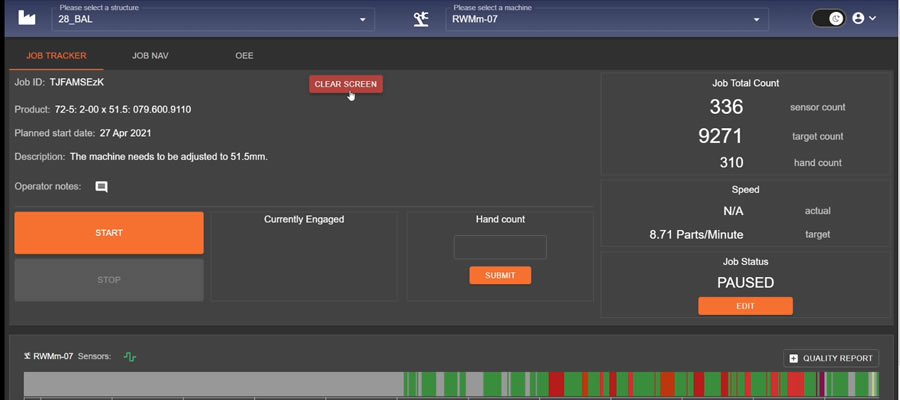We started developing the orders module with specific database information regarding the API’s that we would need to use from the client.
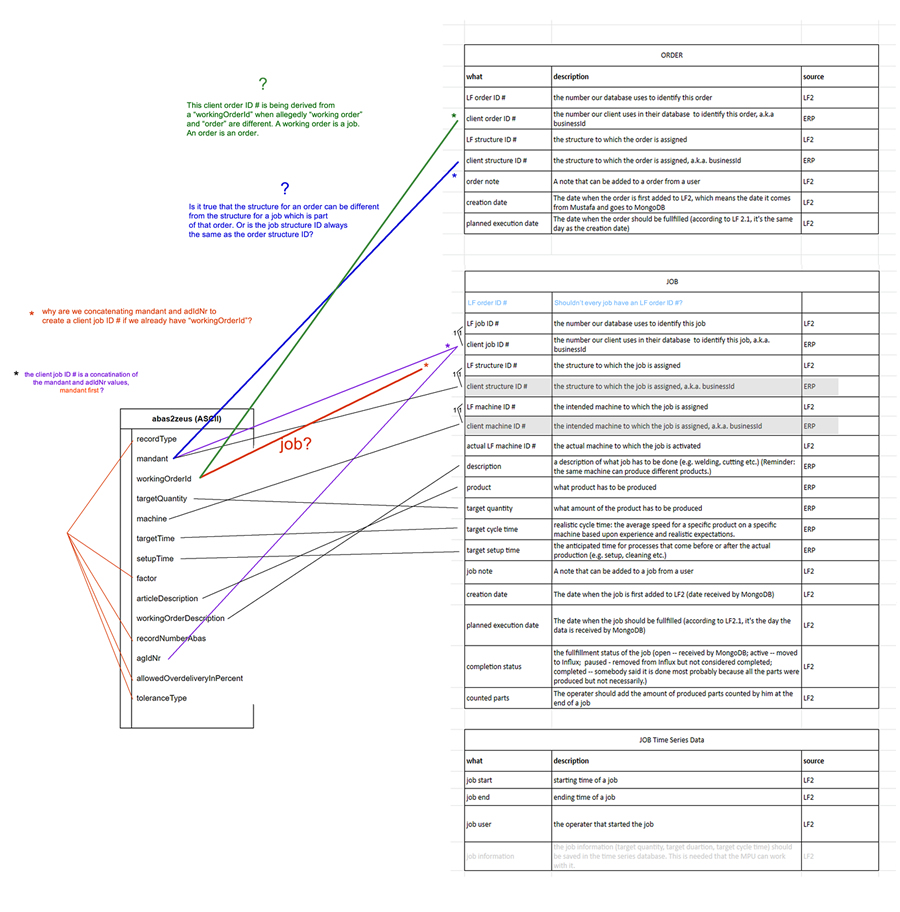
We then we realized we needed to step back and create a common sense understanding of the users and their user environment. We created this diagram.
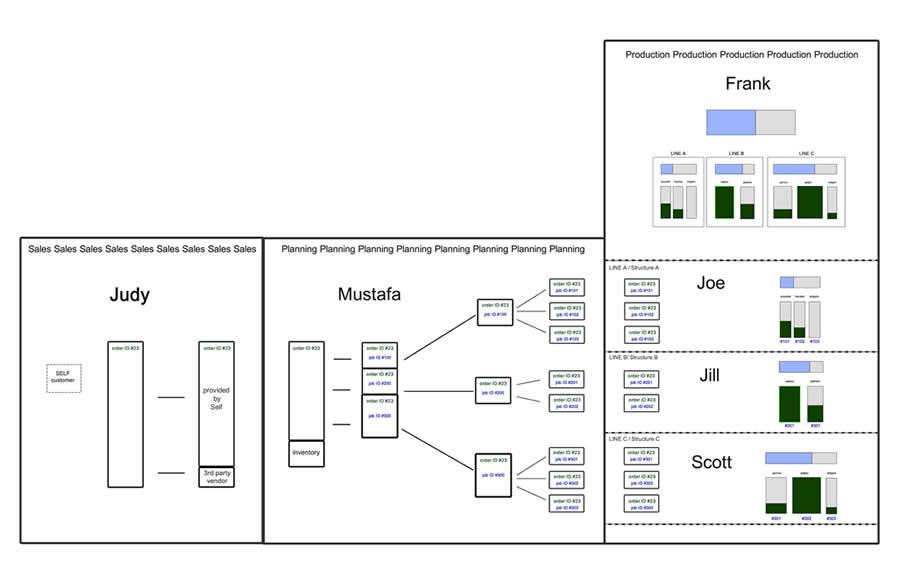
We imagined users named Judy, Mustafa, Frank, Joe, Jill, and Scott at a factory called Self Industries. Judy in sales on behalf of Self Industries accepts orders from customers. She buys items wholesale and the rest of the order is filled by items manufactured by Self Industries.
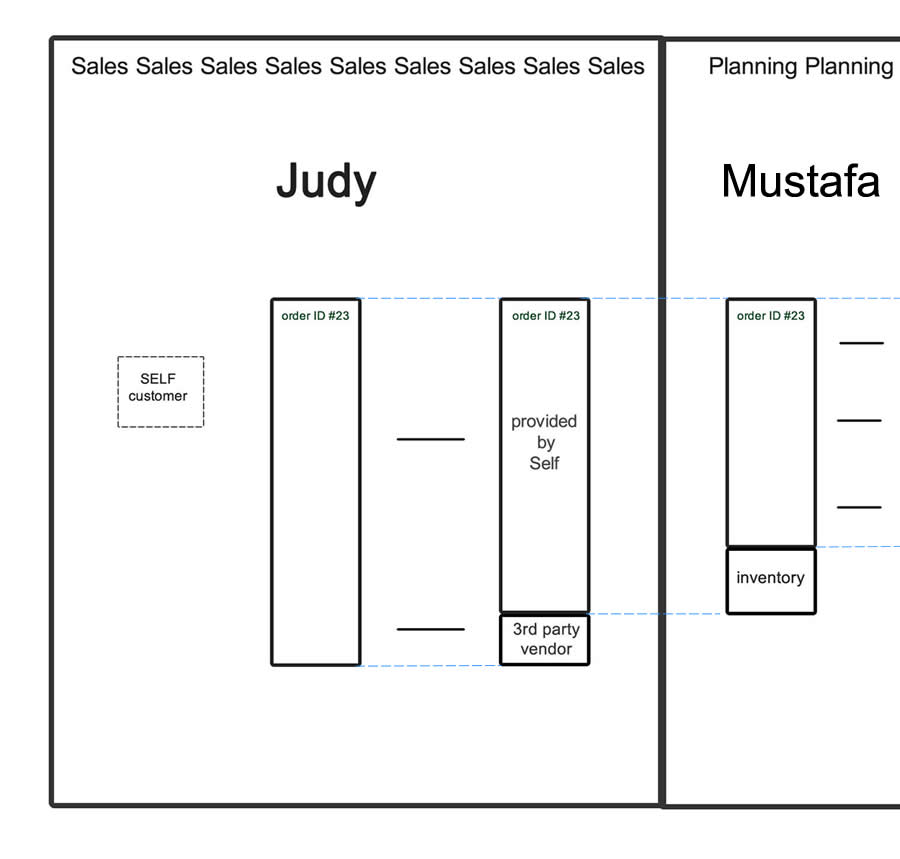
Mustafa in planning receives a list of items that need to be provided by Self Industries. He fills part of the order from inventory. The rest needs to be manufactured by the factory. He divides the order into specific jobs for specific machines. He sends that information into Frank’s world.
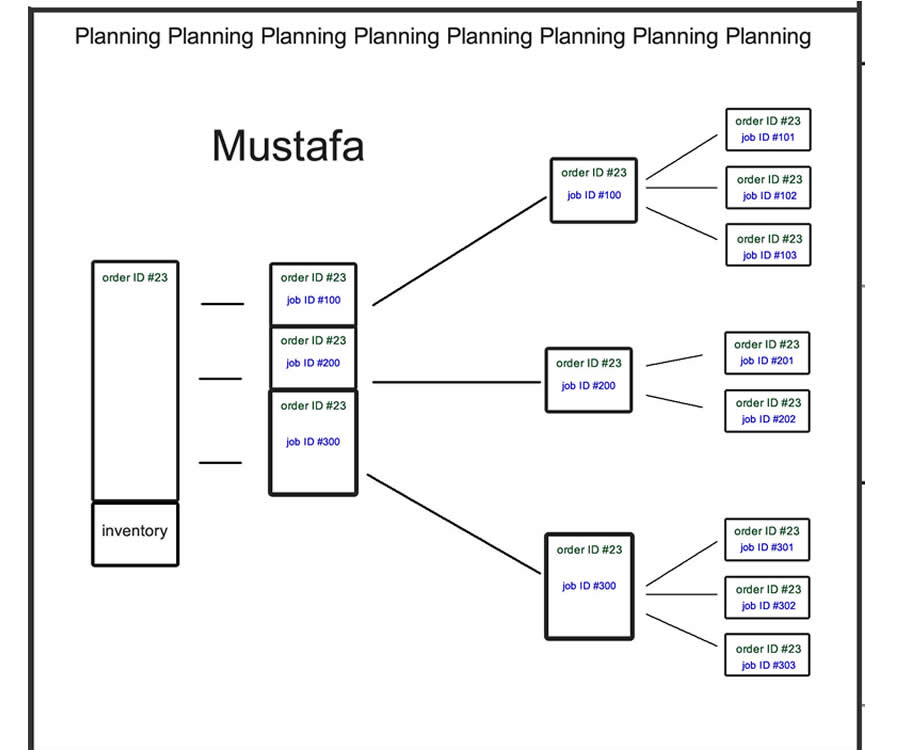
Frank is in charge of actual production. Within Frank’s world, there are three machine operators, Joe, Jill and Scott. It is Frank’s world in which our application’s orders module functions. The orders module receives information from Mustafa’s world but does not need to send information back to Mustafa’s world. Frank, Scott, Joe and Jill enter information into the orders module. The orders module also gets data from the sensors.
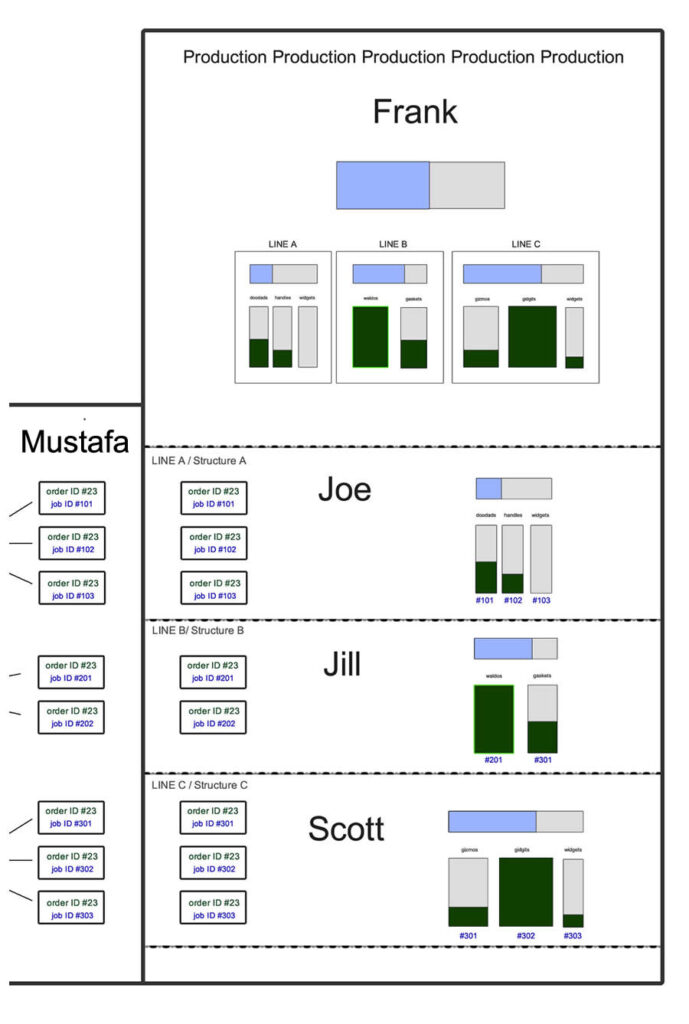
With an understanding of handling orders and each users’ needs, we were able to effectively and efficiently create the orders module.
